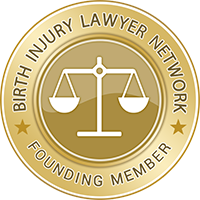Klumpke's Palsy
Klumpke's Palsy is one type of brachial plexus palsy wherein the affected part or the injured part of the brachial plexus is from the cervical vertebra 8 (C8) to thoracic vertebra 1 (T1). The brachial plexus consists of nerves from C5 to T1. C5 and C6 join to form the upper trunk, C7 travels alone as the middle trunk, and C8 to T1 join as the lower trunk. Each trunk divides into anterior and posterior divisions to create the cords, which then subdivide further into branches that supply the muscles of the arm.
Klumpke's palsy is a rare condition and is sometimes known as Klumpke's paralysis or Dejerine-Klumpke palsy. It is characterized by paralysis involving the muscles of the forearm and hand. Most common representation of a child having Klumpke's palsy is the "claw hand" because the child's forearm will be supinated and the wrist and fingers are flexed as a result of the paralysis of all the small muscles in the hand. A symptom of the condition is numbness to the affected area including the skin of the inner arm because T1 fiber nerves also supply sensation to this area. The numbness may also extend to the sides of the hand and first two fingers indicating damaged also to the C8.
A difficult labor and childbirth is one of the most common causes of Klumpke's palsy among infants. A child will be at risk of Klumpke's palsy if he or she has an unusual large size, or is in breech position. Shoulder dystocia is also a contributing factor. Other risk factors are:
- Mother having prior large birth weight babies
- Gestational diabetes
- Mother having prior C-sections
- Mother being physically small and having small pelvis
- Small mother having large babies
- Genetic or constitutional causes such as large women tend to give birth to large babies, neural diabetics or pre-diabetes, overdue pregnancies, excessive maternal weight gain during pregnancy and advance maternal age
There is no specific treatment for Klumpke's palsy, however, its goal must be to prevent contractures. Infants with mild cases of Klumpke's palsy often recover with regular massage and exercise. Surgery to repair the nerves is an option if the baby shows no improvement after three months of regimented physical therapy and occupational therapy or if a nerve has been severed.
However, just like other types of brachial plexus palsy, best treatment for Klumpke's palsy is prevention. A proper antenatal care especially for high-risk mothers as well as antetepartum assessment for fetal weight will be of great help in making a decision on whether or not to deliver the baby via a Caesarean section so the condition can be thoroughly avoided. The condition is usually a result of medical malpractice so parents should be very vigilant. Parents must make sure that the medical practitioners have done everything they could to avoid the condition.
Find an Experienced Birth Injury Attorney in your Local Community
 Find A Lawyer in Columbus, OH
Find A Lawyer in Ohio
Find A Lawyer in Any State
Find A Lawyer in Columbus, OH
Find A Lawyer in Ohio
Find A Lawyer in Any State
